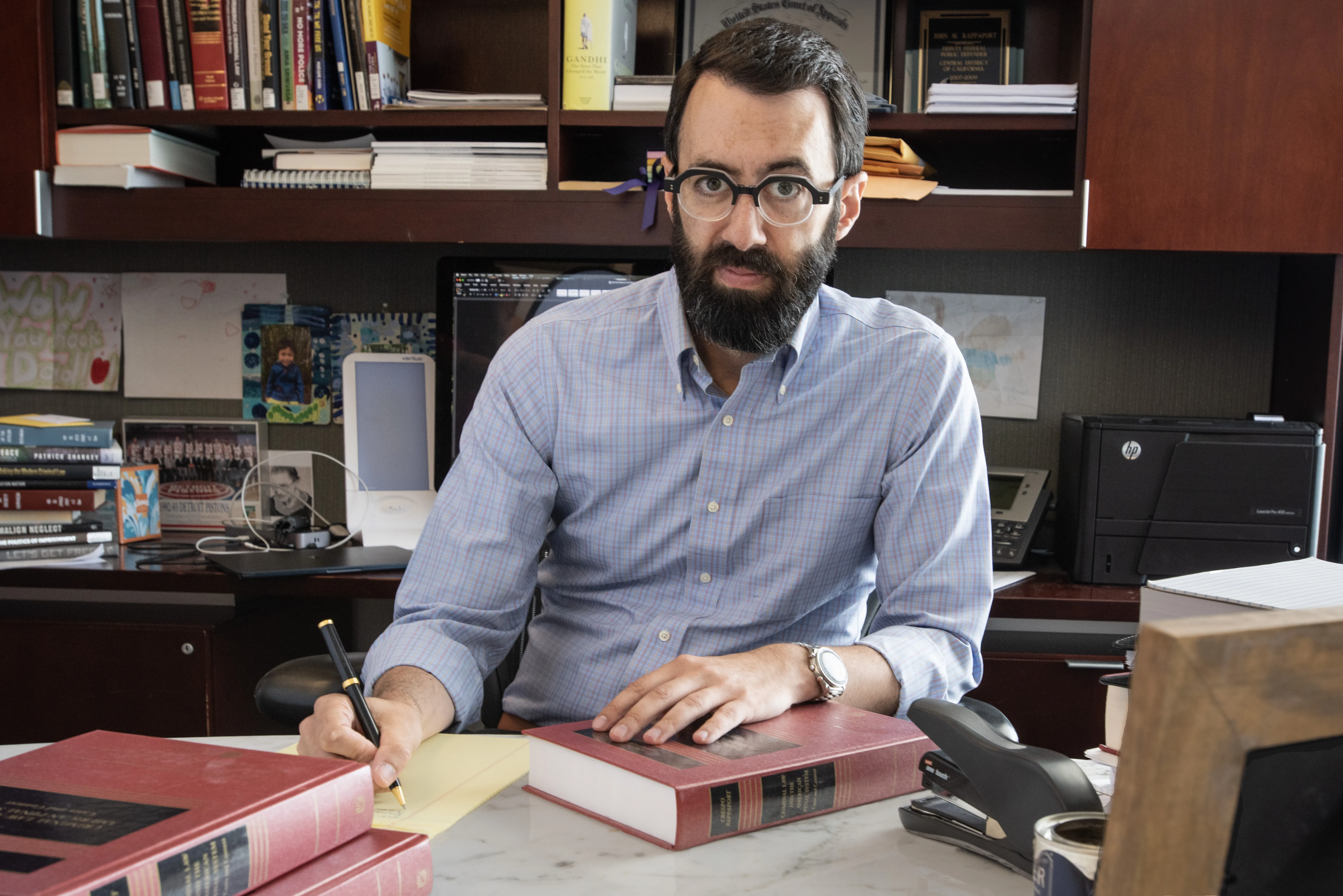John Rappaport Discusses His Innovative New Casebook on Criminal Law and the Penal System

In a casebook released earlier this year, Professor John Rappaport and his coauthor, Harvard Law Professor Andrew Manuel Crespo, present a new approach to teaching criminal law that they believe is better tailored to the needs of today’s generation of law students. Rappaport recently answered questions about this exciting new book, titled Criminal Law and the American Penal System: Cases and Context, First Edition.
What was the impetus for creating this book?
Recent years have intensified scrutiny of longstanding practices in criminal law. In teaching my own course, I felt a growing disconnect between the way casebooks present doctrine—as if operating in a vacuum—and the reality my students and I saw in news headlines and in the data on mass incarceration. Andrew and I saw an opportunity to rethink the way Criminal Law is taught, moving beyond abstract rules to confront how criminal statutes operate on the ground and how they shape, and are shaped by, law enforcement and prosecutorial power.
What makes this book different from others on the topic?
What distinguishes our book is its commitment to rooting doctrine within the social, historical, and institutional contexts that define American criminal law today: the deployment of police authority, the day-to-day workings of prosecutors' offices, the structural choices that have led to mass incarceration. We want students to see that these were, and are, products of human decisions, including decisions about how to craft the law—not inevitabilities. Our hope is that this lens helps the next generation of lawyers not just learn the law, but question and improve it.
Your casebook reorders traditional criminal law topics to better highlight institutional practice. What guided your decisions on this structure?
One of the things that’s unusual about our book is that it omits the so-called “general part.” Other books have a long introductory part with chapters on foundational concepts like mens rea and actus reus. We integrate our teaching of these concepts into our coverage of specific crimes. So, for example, we teach mens rea through teaching the law of homicide. We teach actus reus through teaching the law of sexual assault.
There were two main reasons we chose this approach. First, we think it’s a more natural way to learn this material. No one’s ever been charged with having a mens rea or having done an actus reus. They’re always charged with a crime, and then you figure out what’s the mens rea or actus reus. So, it’s natural to teach the concepts through crimes. Second, omitting the general part and economizing in this way creates space to teach topics that don’t fit in the traditional criminal law course.
The closing section explores “ideas and interventions.” Which interventions—legal, policy, or structural—are you most excited to see discussed in classrooms?
What’s exciting for me is to see students wrap their heads around the problem of mass incarceration and to get them thinking about how law has contributed to the problem—and to what extent law and lawyers might contribute to its solution. Can progressive prosecutors and inventive public defenders make a real dent? Can we legislate our way out? Or is this an all-hands-on-deck situation, beyond the office of experts and bureaucrats, as some of the abolitionists argue?
How did your experiences as a public defender shape your approach to infusing empirical perspectives into criminal law instruction?
When I was a public defender doing capital habeas cases, we worked to ensure the court had a holistic understanding of each client’s life and the circumstances that had led to his harmful actions. This involved working with experts who could educate us—and the court—about the many criminogenic influences our clients faced. When I started teaching Criminal Law, I was struck by how this part of the criminal case—the prelude, you might say—was simply absent from the course. So, Andrew and I decided to write it back into the story. The third chapter of our book gathers up decades of empirical research into the causes of crime and prompts students to think about how, if at all, criminal responsibility ought to hinge on the influence of circumstances beyond the defendant’s control, including structural and societal forces, like poverty, which research and evidence show to be a major driver of criminal behavior.
As this is your first casebook project, what classroom feedback or teaching experience most shaped the final product?
One lesson was how much students thirst for connection between classroom material and the world around them. I think this is true in all classes, but maybe especially so in Criminal Law. This is the first time we have a generation of students arriving on campus having lived through not one but two major periods of social protest over criminal justice issues, first after Michael Brown was killed in Ferguson and then in the wake of George Floyd’s murder in Minneapolis. Students are coming to us knowing something about these issues and wanting to understand their relationship to the law. That’s the connection we try to make in our book.
What is something surprising you discovered in working on this book?
I was struck—again and again—by just how recent many of the central features of the American penal system really are. For instance, the rules governing criminal procedure, and the rise of mass incarceration, are not relics of some distant, unchangeable past; they are products of choices, some made very recently, that can be reshaped.
What would you like to see this book accomplish pedagogically or otherwise?
Most fundamentally, I want the book to help students find their own relationship to criminal law: to see themselves as active participants, capable of critiquing, reshaping, and improving the system. Pedagogically, I hope we enable more curiosity, more open-ended discussion, and greater comfort engaging both with the letter of the law and its broader social practice. I’d also love to see the book serve as a bridge between doctrinal and experiential learning—connecting not just facts and rules, but people, institutions, and policy.
Is there anything else you’d like to share about the book or the process of putting it together?
Only that working on this project has deepened my own sense of the importance—and urgency—of rigorous, critical legal education. The students I encounter are passionate, creative, and ready to grapple with hard problems. I am grateful to be in conversation with them, and with colleagues at the University of Chicago and beyond, about what comes next for criminal law in America.



